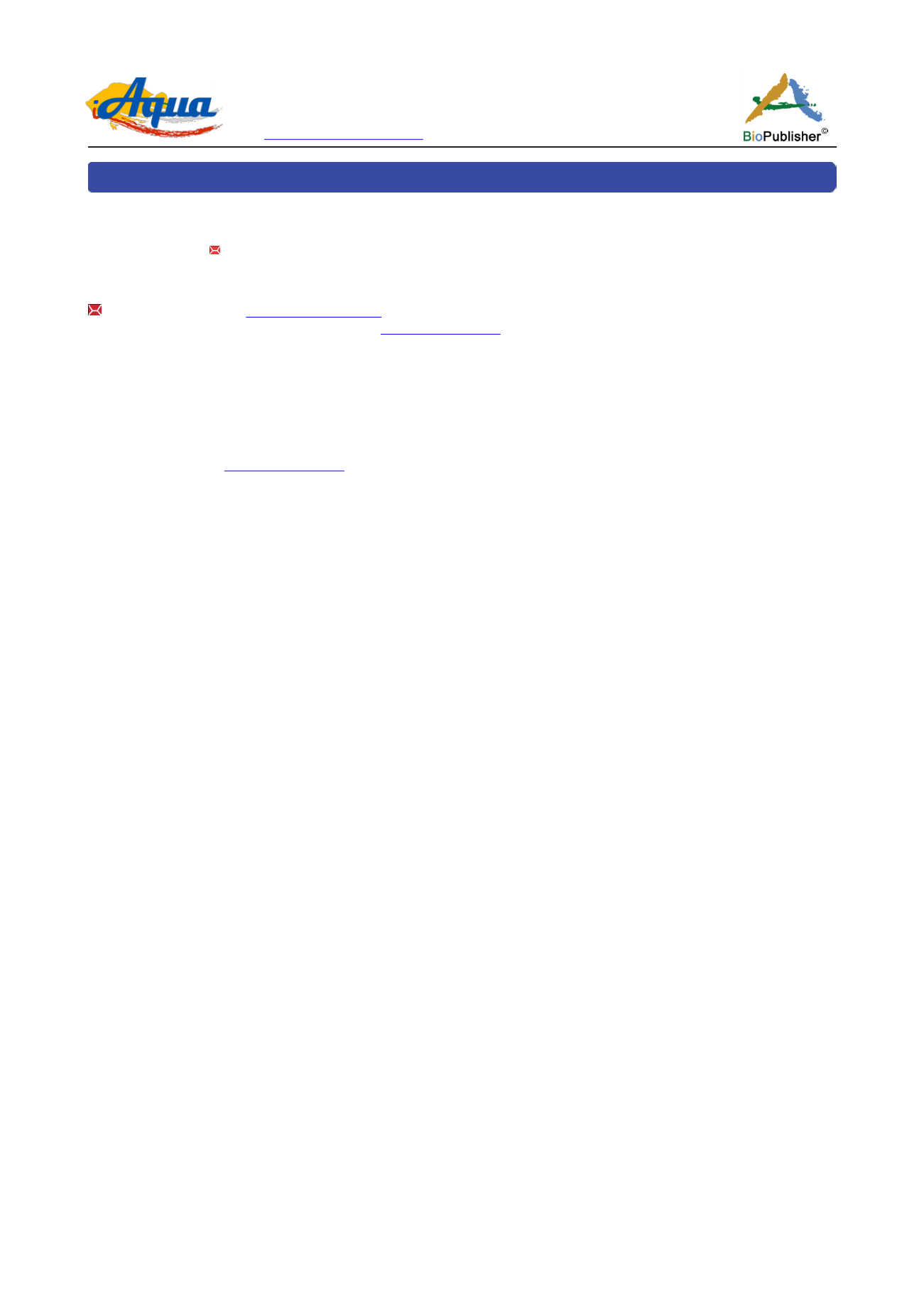
International Journal of Aquaculture, 2016, Vol.6, No.19, 1
-
8
1
Research Article Open Access
The Use of Remote Sensing and GIS in Aquaculture: Recent Advances and
Future Opportunities
Christian Larbi Ayisi
, Andrews Apraku
Key Laboratory of Freshwater Fishery Germplasm Resources, Ministry of Agriculture, Shanghai Ocean University, 999 Huchenghuan Road, Shanghai 201306,
P.R China
Corresponding author Email
International Journal of Aquaculture, 2016, Vol. 6, No.19 doi
Received: 18 Jul., 2016
Accepted: 12 Sep., 2016
Published: 21 Oct., 2016
Copyright © 2016
Ayisi et al., This is an open access article published under the terms of the Creative Commons Attribution License, which permits
unrestricted use, distribution, and reproduction in any medium, provided the original work is properly cited.
Preferred citation for this article
:
Ayisi C.L., and Apraku A., 2016, The use of remote sensing and gis in aquaculture: recent advances and future opportunities, International Journal of
Aquaculture, 6(19): 1-8 (doi
Abstract
Aquaculture has been touted as one of the fastest growing food industries and is expected to grow further in the near
future. As aquaculture production grows, there is the need for pragmatic practices to acquire reliable data in order to curtail the
problems likely to affect production. Over the past decades, remote sensing has played a crucial role in planning, site selection and
monitoring of aquaculture worldwide. This paper review recent advancements in application of remote-sensing (RS) and Geographic
information system (GIS) in aquaculture and describes challenges and future opportunities for the use of these techniques in
development of aquaculture. This review documents that using RS and GIS has a lot to offer aquaculture in the context of planning
and monitoring aquaculture, choosing sites for the development of aquaculture as well as other unexploited areas such as disease
control. It is evident that using these technologies would provide credible information and reduce the large number of samples
required before making decisions.
Keywords
Aquaculture; Opportunities; Remote sensing; Development; Production
1 Introduction
As the population of the world grows at a rate of 1.4% per year, it is estimated that the world population will be
9.1 billion people by 2050 (FAO, 2009). The implication is that there will be a corresponding increase in the
demand for animal protein for human consumption. Aquaculture is obviously a credible source of healthy animal
protein that can meet the demand of the people. Aquaculture can contribute to food security and provide many
social and economic benefits like income and employment generation and associated poverty reduction (Smith et
al., 2010; Paul and Vogl, 2011; Schumann et al., 2011; Slater et al., 2013). Aquaculture’s contribution to world
food production, raw materials for industrial and pharmaceutical use, and aquatic organisms for stocking or
ornamental trade has increased dramatically in recent decades. The report of World Aquaculture 2012 found that
global production of fish from aquaculture grew more than 30 percent between 2006 and 2011, from 47.3 million
tons to 63.6 million tons (Cruz et al., 2012). Approximately half of the fish consumed across the world is
produced through aquaculture (Troell et al., 2013; FAO, 2014; Ottinger et al., 2016). It is expected that global fish
supply would increase to 187 million tons in the year 2030 with aquaculture equaling the quantity obtained
through capture production (The World Bank, 2013).
Despite the rapid growth, aquaculture development continues to be hindered by a number of constraints. These
include limited suitable sites, concerns regarding impacts of aquaculture on the environment, and multi-use
conflicts. Improper aquaculture development may result in overexploitation and un-sustainability on the use of
natural resources (Radiarta et al., 2008).
In order to increase aquaculture production without adverse effects on the environment, there is the need to ensure
practices that are environmentally safe, technically appropriate, economically viable and socially acceptable
through integrated planning and management. Information on the quality of water, productivity levels, land
use/land cover and a host of others could be made available through the use of remote sensing and GIS. Remote


